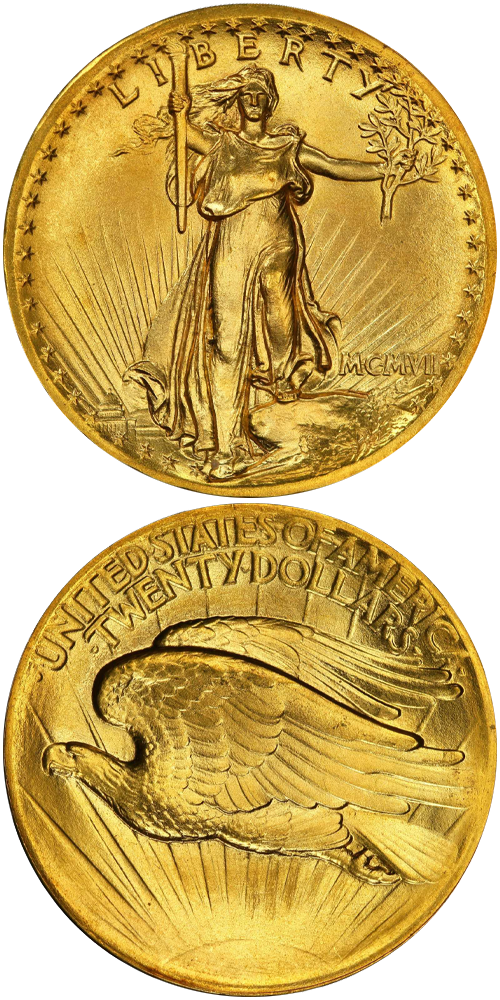1907 Saint Gaudens Double Eagle
Flat Rim
The High Relief MCMVII double eagle has long occupied a prominent spot on most numismatists' wish lists almost from the beginning, starting with the design's forceful patron, Theodore Roosevelt. After a long series of setbacks and technical issues hampered production of the coins, Mint Director, Frank Leach was able to present the President with several examples. The high relief design still presented many impediments to mass production. Charles Barber, a strong opponent of the coin, observed that the quality of strike could not be maintained on a consistent basis, a concern he raised to John Landis, Superintendent of the Philadelphia Mint. Unbeknownst to Roosevelt or to other Mint officials, Barber had been working on a version with drastically reduced relief that also had notable changes to the design, the most obvious being the replacement of the date expressed in Roman numerals with more conventional Western style numerals.
The High Relief coins were eagerly anticipated by the public and were quickly snapped up when they were distributed through the sub-treasuries and large banking institutions. Few entered actual commerce but instead were frequently sold at a significant premium above face value for their numismatic interest. As the public became acclimated to Barber's low relief version, interest began to fall off and eventually by the 1920s High Relief double eagles could even be found in circulation. While many likely ended up in Treasury melting pots during the Great Depression, still others were saved. It was not until the repatriation of other double eagles from overseas holdings that interest began to pick up once again. Since then, the issue has been one of the most celebrated of all U.S. coin designs and an iconic image familiar even to those who are not active collectors.
Fortunately for those collectors seeking an example, roughly half of the original coins are still available for a new generation to appreciate, many in Mint State. The difficulties in production resulted in two varieties that have been collected since 1908, the Flat Rim variety, and the Wire Rim. Among the survivors, there are twice as many Wire Rim examples compared to the Flat Rim variety, a factor that has earned the Flat Rim variety a premium. For many decades now demand has far outpaced availability especially for pieces that have not been mishandled or ended up in jewelry. Gem Mint State examples offer the most advanced collectors the winning combination of scarcity and great beauty.
The example to the left was sold by Stack's Bowers Galleries in the D. Brent Pogue Part VII Auction, where it realized $456,000.






